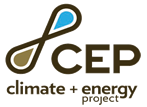Upcoming Events
Tomorrow, April 7th, 2021, don’t miss it!
Solve Climate by 2030 by Developing a Kansas
Climate and Energy Plan
Hosted by Larry E. Erickson of Kansas State University and sponsored by Bard College and Open Society University Network, this event will feature panelists from the Climate + Energy Project, the Kansas Natural Resource Center, Metropolitan Energy Center, Clean Air Now, and other advocates. See the agenda details below.
Solve Climate by 2030 by Developing a Kansas Climate and Energy Plan Agenda
February 2021 Power Outages, Winter Resilience, and Kansas Climate and Energy Plan
Dorothy Barnett, Climate + Energy Project
Zack Pistora, Kansas Natural Resource Council
Sequestering Carbon with Trees in Kansas
Charles Barden, Kansas State University
Kansas City Regional Climate Action Plan
Kelly Gilbert, Metropolitan Energy Center
Panel of speakers and younger environmental advocates
Beto Lugo Martinez, Josh Thede, Justice Horn, Rachel Jefferson, and Emma Pettay
Why 2030?
The world’s top climate scientists have told us we have a ten-year window to make rapid reductions in the carbon pollution causing global warming in order to hold the warming to the low end of under 3 degrees F. If we don’t, we will severely destabilize the global climate, leading to extreme weather, droughts, floods and sea-level rise that will be increasingly hard for humans to manage.
Why State-Level and Local Action?
The very good news on climate is that a whole suite of clean energy solutions—from solar to wind to battery storage to electric vehicles and more— have gotten cheap and are getting cheaper. In many markets, these solutions now cost substantially less then the polluting, fossil fuel alternatives. Bard researchers have explored (here and here) the Solar Dominance Hypothesis: the idea that in the 2020’s solar plus storage will emerge as part of a suite of highly disruptive clean energy technologies. These powerful market trends mean that scaling up climate solutions is increasingly about smoothing the paths for adoption, and much of this work needs to happen locally. A glaring example: The US state of Florida, nicknamed the “Sunshine State”, has very little solar power. Just across the border, Georgia is a top-10 solar state. The difference? Policy driven by civic action. Rising state and local action around climate solutions could open the road to “solve climate”—the energy side—over the next decade.
Starting 4.6.21: Global Dialog: Fifty Countries / One Hundred Universities
To focus the world on regional-level and local solutions, the Center for Environmental Policy at Bard College is organizing simultaneous “global dialog” webinars, one in fifty different countries, and in every US state. Beginning on April 6th, we will hear from climate solutions experts in Hungary, South Africa, and Kyrgyzstan, as well as Florida, New Mexico and Minnesota– 100 sites worldwide– about ambitious but feasible actions that could happen soon in their state to spur a just, Green Recovery, get the world on track to solving climate by 2030. Colleges and universities and local faith, civic and business groups will host viewings of the webinars and in person discussions of how to get involved in climate solutions.
Faculty at all levels and across the curriculum worldwide can assign viewing of the webinars live or recorded as homework, and then spend the next class discussing climate solutions. This opportunity is not just for environmental studies classes. The challenges posed by solving climate change necessarily range across history, science, business, culture, economics, psychology, religion, government, media, journalism and the arts. Solve Climate has disciplinary guides for follow-up discussion herefor the state-level, solutions-focused webinars.

Solve Climate by 2030 by Developing a Kansas Climate and Energy Plan April 7, 2021
6:00-8:00PM CST

